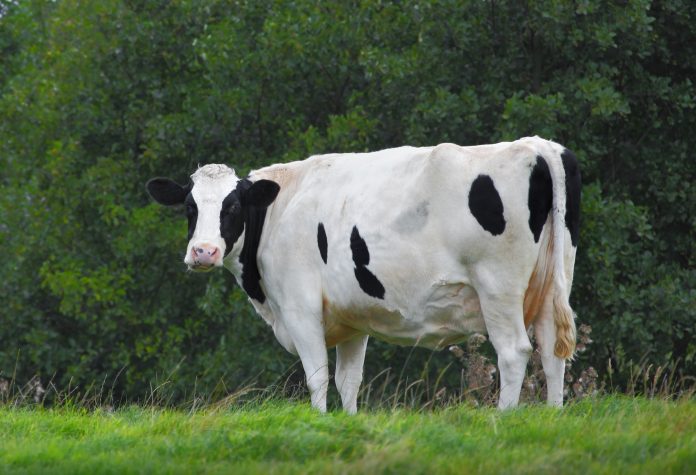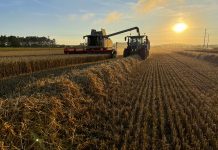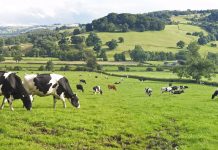Craig Rhodes, EMEA Industry Lead for Artificial Intelligence Healthcare and Life Science at NVIDIA, explores how bovine tuberculosis (bTB) can be monitored and treated more effectively and efficiently using artificial intelligence (AI)
Each morning millions of bleary-eyed people pour milk into their bowls of cereal or cups of coffee without a second thought as to where that beverage came from.
Few will consider the processes in place to maintain the health of the animals involved in milk production and to ensure that the final product is fit for consumption.
For cattle farmers, few things can sour their efforts like bovine tuberculosis (bTB), a chronic, slow-progressing and debilitating disease. bTB presents significant economic and welfare challenges to the worldwide cattle sector.
Applying GPU-accelerated AI and data science, Scotland’s Rural College (SRUC), headquartered in Edinburgh, recently spearheaded groundbreaking research into how bTB can be monitored and treated more effectively and efficiently.
Bovine Tuberculosis
Caused by bacteria, bTB is highly infectious among cattle and transmissible to other animals and humans.
It also causes substantial financial strain through involuntary culling, animal movement restrictions, and the cost of control and eradication programs. In countries where mandatory eradication programs are not in place for bTB carriers, the disease also carries considerable public health implications.
As bTB is a slow-developing disease, it’s rare for cattle to show any signs of infection until the disease has progressed to its later stages.
To monitor the health of herds, cattle need to receive regular diagnostic tests. Currently, the standard is a single intradermal comparative cervical tuberculin (SICCT) skin test. These tests are time-consuming, labour intensive and only correctly identify an infected animal about 50-80% of the time.
Milking it
SRUC’s research brought to light a new method of monitoring bTB based on milk samples that were already being collected as part of regular quality control checks through what is called mid-infrared (MIR) analysis.
First, the bTB phenotype (the observable characteristics of an infected animal) was created using data relating to traditional SICCT skin-test results, culture status, whether a cow was slaughtered, and whether any bTB-caused lesions were observed. Information from each of these categories was combined to create a binary phenotype, with zero representing healthy cows and 1 representing bTB-affected cows.
Contemporaneous individual milk MIR data was collected as part of monthly routine milk recording, matched to bTB status of individual animals on the SICCT test date, and converted into 53×20-pixel images. These were used to train a deep convolutional neural network on an NVIDIA DGX Station that was able to identify particular high-level features indicative of bTB infection.
SRUC’s models were able to identify which cows would be expected to fail the SICCT skin test, with an accuracy of 95% and corresponding sensitivity and specificity of 0.96 and 0.94, respectively.
To process the millions of data points used for training their bTB prediction models, the team at SRUC needed a computing system that was fast, stable and secure. Using an NVIDIA DGX Station, models that had previously needed months of work now could be developed in a matter of days. And with RAPIDS data science software on top, the team further accelerated their research and started developing deep learning models in just a few hours.
“By running our models on NVIDIA DGX Station with RAPIDS, we were able to speed up the time it took to develop models at least tenfold,” said Professor Mike Coffey, leader of the Animal Breeding Team and head of EGENES at SRUC. “Speeding up this process means that we’ll be able to get meaningful solutions for combating bTB into the hands of farmers faster and vastly improve how bTB is handled nationwide.”
Moo-ving forward
Using routinely collected milk samples for the early identification of bTB-infected cows represents an innovative, low-cost and, importantly, noninvasive tool that has the potential to contribute substantially to the push to eradicate bTB in the U.K. and beyond.
Such a tool would enable farmers to get access to crucial information much faster than currently possible. And this would enable farmers to make more efficient and informed decisions that significantly increase the health and welfare of their animals, as well as reduce costs to the farm, government and taxpayer.
The success of predicting bTB status with deep learning also opens up the possibility to calibrate MIR analysis for other diseases, such as paratuberculosis (Johne’s disease), to help improve cattle welfare further.











